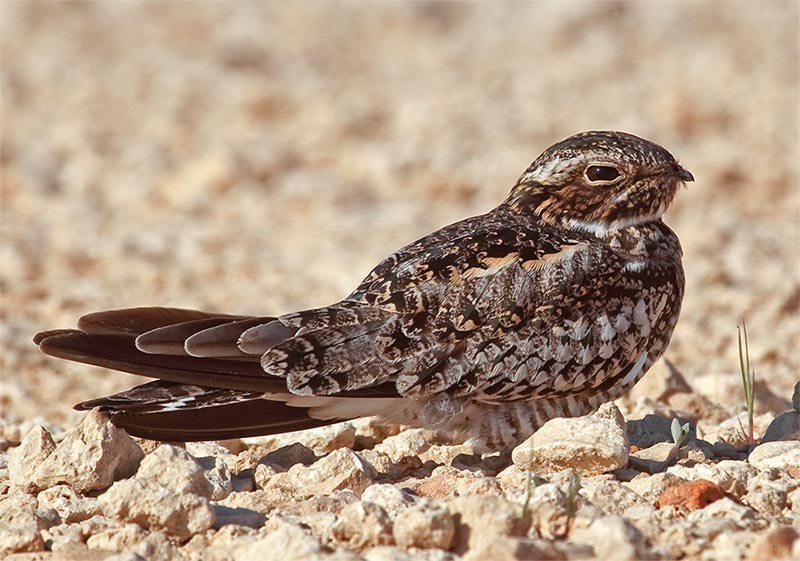On a warm August evening at Boston’s Fenway Park, everything had fallen into place by the fifth inning: The Red Sox were beating the Angels 6-0. My pals and I in right field were enjoying two of baseball’s four food groups – beer and peanuts. And a half-dozen common nighthawks were feeding on big white moths high above the outfield grass.
It was a fitting display for an odd bird with a dubious relationship to people.
But first, a dubious name: the common nighthawk – hardly common anymore – is not purely a nighttime hunter and is not at all a hawk; rather, it’s a member of the family Caprimulgidae, which translates from the Latin to mean goat-milker. Nighthawks and their relatives (including the whip-poor-will) yawn wide-open mouths to inhale insects on the wing or, as the legend goes, to suck milk from the udders of goats.
Nighthawks nest in prairies and grasslands, coastal sand dunes, forest clearings (including burns and clearcuts in mixed or coniferous woods), rocky outcrops, and even on flat rooftops. In quieter cities and towns across the county, our summertime dawn and dusk choruses once featured the buzzy peent calls of nighthawks foraging for insects attracted to street (or stadium) lights.
But no more. During the past 30 years or so, nighthawks have vanished from most northeastern communities. The cause is not clear. It may be due in part to the use of new rubberized roofing materials which lack the gravel that once served as nighthawk camouflage and probably kept eggs from rolling around.
Or perhaps the decline of nighthawks signals something more troubling in our skies. Biologists and birdwatchers are now documenting population declines among a number of other North American birds that hunt insects on the wing, including whip-poor-wills, swifts, swallows, and flycatchers – a suite we call aerial insectivores.
In the search for a cause, it’s reasonable to investigate the common denominator: airborne insects, which we humans have been attacking with pesticides for more than half a century. Even so, not all aerial insectivores are declining; some are doing fine. The other complication is that we know relatively little about the status of insect populations. We’ve been counting birds for more than a century, but are only now beginning to understand insect abundance and population trends.
Another theory involves what conservationists call temporal mismatch. Migratory birds generally synchronize their breeding with peak food abundance or availability, but as the planet warms, some insect species now reach peak abundance earlier in the season. So it’s possible that nighthawks, wintering in South America, don’t get the memo and are failing to adapt to global warming at the same rate that their prey are responding.
A lot of this remains speculative, and our search for a cause of aerial insectivore decline is complicated by the usual threats: habitat loss (here and in the tropics), pollution, industrial agriculture, housing development, and invasive species. It does appear that the aerial insectivores that migrate farthest – particularly common nighthawks, which make one of the longest migrations of our land birds – fare worse than those that migrate shorter distances. It could be that the demands of a big migration compound the other threats. It’s difficult to say, though, because we know so little about what happens to these birds once they leave us in the fall.
But we can still watch common nighthawks on their journey south. From mid-August through mid-September here in the Northeast, nighthawks migrate in plain view, sometimes in big numbers. Look for them moving in the late afternoon or evening along river valleys or lake shores. Decades ago, particularly in the Midwest, birders could sometimes see nighthawks in migration by the thousands, but here in the Northeast, we’re more likely to count dozens or, on a good evening, a hundred or so. It’s not a bad way to pass the time during the waning days of summer – especially if your favorite baseball team is no longer in the pennant race.


